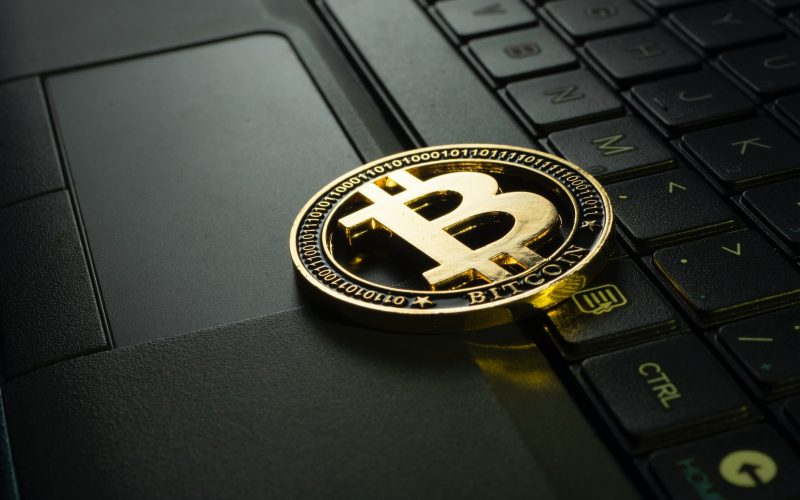A blockchain is a member-accessible, cryptographically secure ledger that stores and tracks data and value in chronological order, creating secure records of transactions. Such records may not be altered or distorted.
Process of Transaction in Blockchain
Each transaction is certified by cryptographic signatures of the participants after they reach decentralized consent and is added to the ledger as a new “block” (block) in the chain of records (chain). The entire encrypted chain is visible to participants, making transactions transparent while keeping personal data private. Note that transactions are not completely anonymous, as the time and price of each transaction is recorded on the blockchain. Numerous companies are offering cryptocurrency development services to the users, enabling them to obtain top-tier and secure solutions designed to cater to their specific needs.
Cryptographically Sealed Registry
Registry is cryptographically sealed, which protects it from tampering, Due to the fact that its data is distributed among all participants, the control of any one participant over it is excluded. Information on the blockchain can only be updated with the consent of the majority of participants, which reduces the risk of fraud and, more importantly, eliminates the need for a centralized, coordinated verification (authorization, approval) process by an intermediary. In the context of the blockchain, the most striking example would be bitcoin, which is settled without any centralized authority, using a peer-to-peer method.
Introduction to Bitcoin
Bitcoin is a digital (electronic) currency issued and transferred by a peer-to-peer method within the bitcoin network. This network “owns” the blockchain, a distributed (decentralized) storage (registry) ( DL ) that records every bitcoin transaction. The bitcoin network does not have an owner, it operates on the basis of a common base owned by participants who store personal copies of the registry. This electronic currency can be used to pay for goods, services, has an exchange rate that allows you to convert it into fiat currency.
Bitcoin Wallets
To make a transaction, participants use Bitcoin wallets. The wallet contains a “private key” and a “public key”. The private key is a secret number (usually 256-bit) that opens the wallet and allows you to spend the Bitcoin stored in the wallet. The shared key is used to transfer Bitcoins to, for example, your wallet. The private key is used by you to transfer the Bitcoins to another member’s wallet. When the two keys “join”, the transaction is completed. The public key is visible to any participant. The private key is visible only to its owner. If the private key is lost, access to the wallet will also be lost. Even though it’s nearly impossible to steal the private key, however, you should use a trustworthy blockchain development services to access your wallet and protect the private key.
Through mathematical calculations, blocks are created by so-called miners. Such blocks contain some or all of the recent transaction data. For creating a block, the miner receives a reward – a fixed amount of bitcoins. Thus, new bitcoins enter circulation. The fact that the amount is fixed, with specially calculated limits, suggests that the number of bitcoins in circulation will never exceed 21 million. Thus, the price of bitcoin stabilizes.
Some Basic concepts:
Bitcoin
Bitcoin is a unit of value similar to gold or a real fiat currency such as the US dollar, British pound sterling, Japanese yen.
Blockchain
Blockchain refers to the technology on the basis of which bitcoin (Bitcoin’s blockchain network) is circulating. However, the Bitcoin blockchain is just a variant of the blockchain. Represents a corruption-resistant sequence of registry entries available to a network with many members.
Cryptocurrency
Cryptocurrency is a means or unit of exchange that is cryptographically protected, does not have an issuer, as well as any contract as a basis for issuing.
Distributed
Distributed storage (registry) (‘Distributed ledger’ (DL)) is any database that all its users have access to, synchronized within the network and stores records of all transactions in a registry accessible to users. An example is the Bitcoin blockchain.
Fintech
As a rule, it implies new technologies designed to compete with or replace traditional methods used in the provision of financial services (banking, payment, credit, fundraising, asset management).
Multi-signature
Two or more digital signatures, through which, as a rule, the approval and approval of any action is carried out (for example, a multi-signature transaction).
Peer-to-peer
From one independent node to another – about the transfer of information on a computer network (‘Peer-to-peer’ (P2P)) – carried out directly between participants without the use of an intermediary, such as a financial institution or broker.
Smart contract
Smart contract is a computer protocol through which the terms of the agreement of the participants are executed. It is not a legal document, but contains traditional contractual terms (for example, payment terms) and makes the participation of a trusted intermediary unnecessary, since by processing the data entered into it on the basis of an established set of rules, it automatically performs the prescribed actions (for example, payment) without the need to involve a third party to manage or control the entire process.



